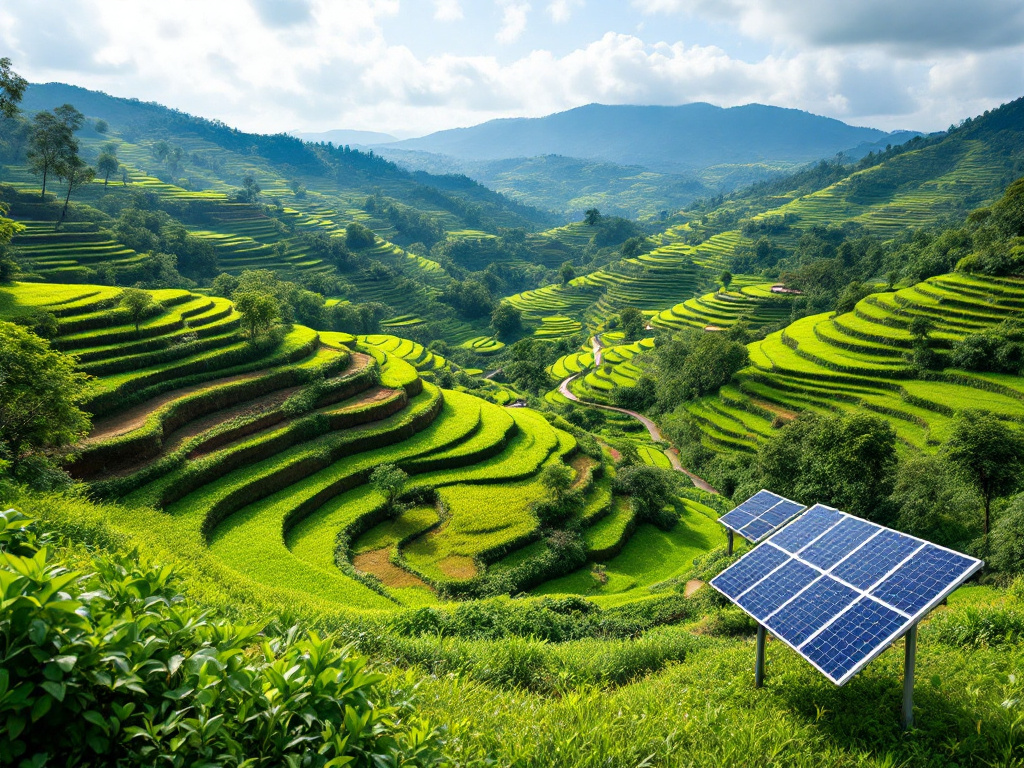Rwanda’s Green Revolution – A Model for Sustainable Development
Rwanda, often referred to as the “Land of a Thousand Hills,” has emerged as a global leader in sustainability and environmental conservation. From lush terraced farms to innovative solar energy projects, the country’s green revolution is a testament to what can be achieved with visionary leadership and community-driven efforts. Below, we explore the key elements of Rwanda’s transformation and why it serves as a blueprint for sustainable development worldwide.

The Pillars of Rwanda’s Green Revolution
Reforestation Efforts
Rwanda has made remarkable strides in reversing deforestation, a critical issue for many developing nations. Through initiatives like the National Forest Policy and community tree-planting campaigns, the country has restored its ecosystems and increased forest cover significantly. This not only combats climate change but also protects biodiversity.
Sustainable Agriculture
Innovations such as terracing and organic farming have revolutionized Rwanda’s agricultural sector. These practices prevent soil erosion, improve water retention, and boost crop yields, ensuring food security for its growing population.
Renewable Energy
Rwanda is harnessing the power of the sun and water to meet its energy needs. Projects like the Rwanda Renewable Energy Fund and the Nyabarongo Hydroelectric Plant are reducing reliance on fossil fuels and providing clean energy to rural communities.
Waste Management
The country’s ban on plastic bags and monthly community clean-up days, known as Umuganda, have made Rwanda one of the cleanest nations in Africa. These efforts highlight the importance of policy and public participation in environmental conservation.
Government Policies Driving Change
Rwanda’s success is rooted in strong governance and forward-thinking policies. Vision 2050, the nation’s long-term development strategy, prioritizes sustainability and green growth. Additionally, programs like Agaciro Development Fund empower local communities to take ownership of environmental projects.
Economic and Social Benefits
The green revolution has not only preserved Rwanda’s natural beauty but also spurred economic growth. Jobs in renewable energy, eco-tourism, and sustainable agriculture are on the rise, improving livelihoods across the country. Moreover, cleaner air and water have led to better public health outcomes.
Challenges and Lessons for the World
While Rwanda’s achievements are impressive, challenges remain. Scaling up green initiatives requires sustained funding and international support. However, the country’s model proves that even small nations can lead the way in sustainability. Its emphasis on community engagement and policy enforcement offers valuable lessons for other countries.
Conclusion
Rwanda’s green revolution is a shining example of how environmental stewardship can drive economic and social progress. By prioritizing sustainability, the country has set a benchmark for others to follow. If you’re inspired by Rwanda’s journey, consider supporting similar initiatives in your community or exploring ways to contribute to global sustainability efforts.
For more information on sustainable practices, visit our pond enhancements page or contact us to learn how you can make a difference.